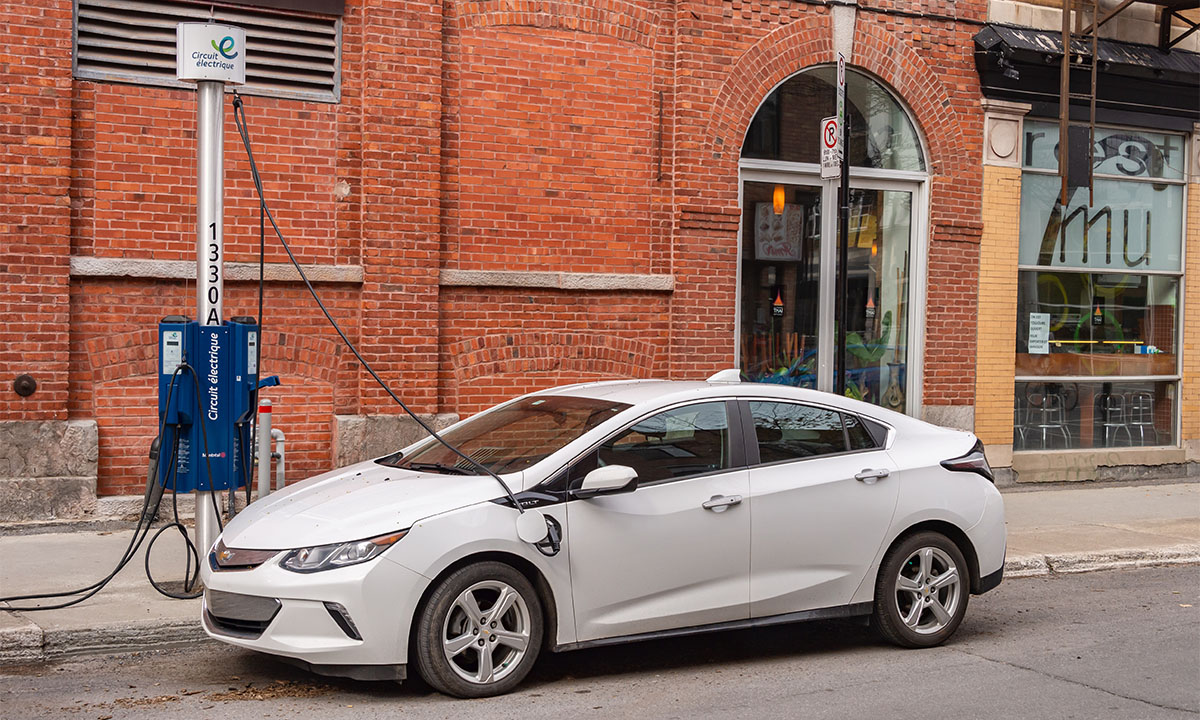Québec’s surprise decision to remove ZEV purchase incentives risks slowing down EV adoption

Recently, the Québec Government has announced its progressive removal of the ZEV purchase incentives known as Roulez Vert in the Belle Province.
This came as a shock as Québec has been one of the leading provinces in terms of ZEV adoption and a majority of experts agree that these incentives played a major role in this success.
Indeed, for 2023, ZEVs represented 18.6 per cent of all new motor vehicle registrations in Québec while, in volume, this number represents almost 42 per cent of all ZEV registrations in the country.
It is hard to ignore the effect that Roulez Vert has in accelerating the transition and, to be fair, it would be even harder to try and identify another variable that could explain this growth.
You don’t have to look too far to find a situation where a deficient ZEV incentives program has led to slower and lower ZEV adoption levels. In Ontario, a province that has a similar makeup than Quebec with one major urban center, ZEVs represented seven per cent of all motor vehicle registrations.
Considering this was a surprising decision coming from a self-declared green government, I thought it would be interesting to review the political discourse surrounding this announcement, both in Québec and across Canada.
The first thing that appeared in a number of articles is that the Québec government leaned in, and was supported by some portion of the public, on the overall costs of prolonging this incentives program.
By simultaneously announcing an $11 billion deficit, it seems as if Benoît Charette, Québec’s current Minister of Environment, believed it would be the right moment to pull-the-plug on Roulez Vert and frame this decision as a cost-cutting maneuver in a time where the transition to EVs doesn’t require taxpayer dollars to continue.
Someone could argue that there are two major blind spots to this position. The first one being that while this program is obviously a state-funded initiative, the money comes directly from a larger investment fund called Fonds Vert or Green Fund.
The amount of money available for the Roulez Vert program was agreed upon and announced in advance — allowing it to be cautiously integrated to the overall plans, for the green fund, by the government.
By being unclear about the source of the funding, the Coalition Avenir Québec made it look as if every new EV purchase resulted in the removal of some hard-earned taxpayer’s money. Essentially, the money is still available but the Minister simply chose to attribute it somewhere else — which is the angle the government took without giving the proper context.
Indeed, the other blindside to the narrative proposed by the government is that this re-allocation of money is supposedly based on the fact that the ZEV transition in Québec is well under way and that the momentum forward is here to stay. Thing is, it is currently not a fact — or at least it’s more of a chicken-or-egg situation than a cold-hard fact.
As mentioned, it is true that Québec is a bright spot for Canada’s overall transition towards a full-EV, sustainable automobile fleet. Whatever the personal position on if and how that transition should be done, it’s clear that the government of Québec has done a great job in building an environment where an electric vehicle is a possible and a sensible option for the consumer.
One of the reasons it became a sensible option, however, is because the purchase incentives from the Roulez Vert program offset the significantly higher price point often associated with EVs across all brands and segments.
There are multiple macro and microeconomic reasons why EV prices have increased and are stuck at a price level usually higher than the price for a similar ICE model — and there are also reasons why these prices will eventually trend downward (some of which we are already seeing).
The challenge with this approach is that it is risky — and somewhat reckless — to move away from a proven solution and expect the market, with all its complexities, to solve the pricing issue immediately and thus pray that the EV transition stays on track with the same pace.
Many manufacturers are already feeling a significant decrease in EV interest by Canadian consumers, which has been underlined by some of the public decisions and announcements made by important brands over the last six months.
This decreased interest is explained notably because the supply has met the demand from the early EV adopters, but also by a seemingly shared hesitancy by many consumers, because of the price of these vehicles and the accessibility of charging infrastructure.
Removing the incentives could have a negative effect on consumers’ willingness to enter the EV market at a time when manufacturers are thinking long and hard about their long-term EV strategy.
We could see a progressive retraction from OEMs from the EV market which would reduce inventory over time and then would allow for smaller supply to meet smaller demand — generating a more subtle or non-existent price reduction while simultaneously limiting the province’s ability to meet its 2035 EV targets.
Sustained demand is the way to ensure that EVs are available in Québec and in the country, and purchase incentives are — currently speaking — the obvious tool to ensure that demand is kept at a level aligned with our federal and provincial environmental targets.
By moving away from the only solution that has had a significant positive impact on EV adoption, Québec might influence other provincial governments to steer away from incentives when they truly are, in fact, their true hope at kickstarting the transition towards EVs.
















